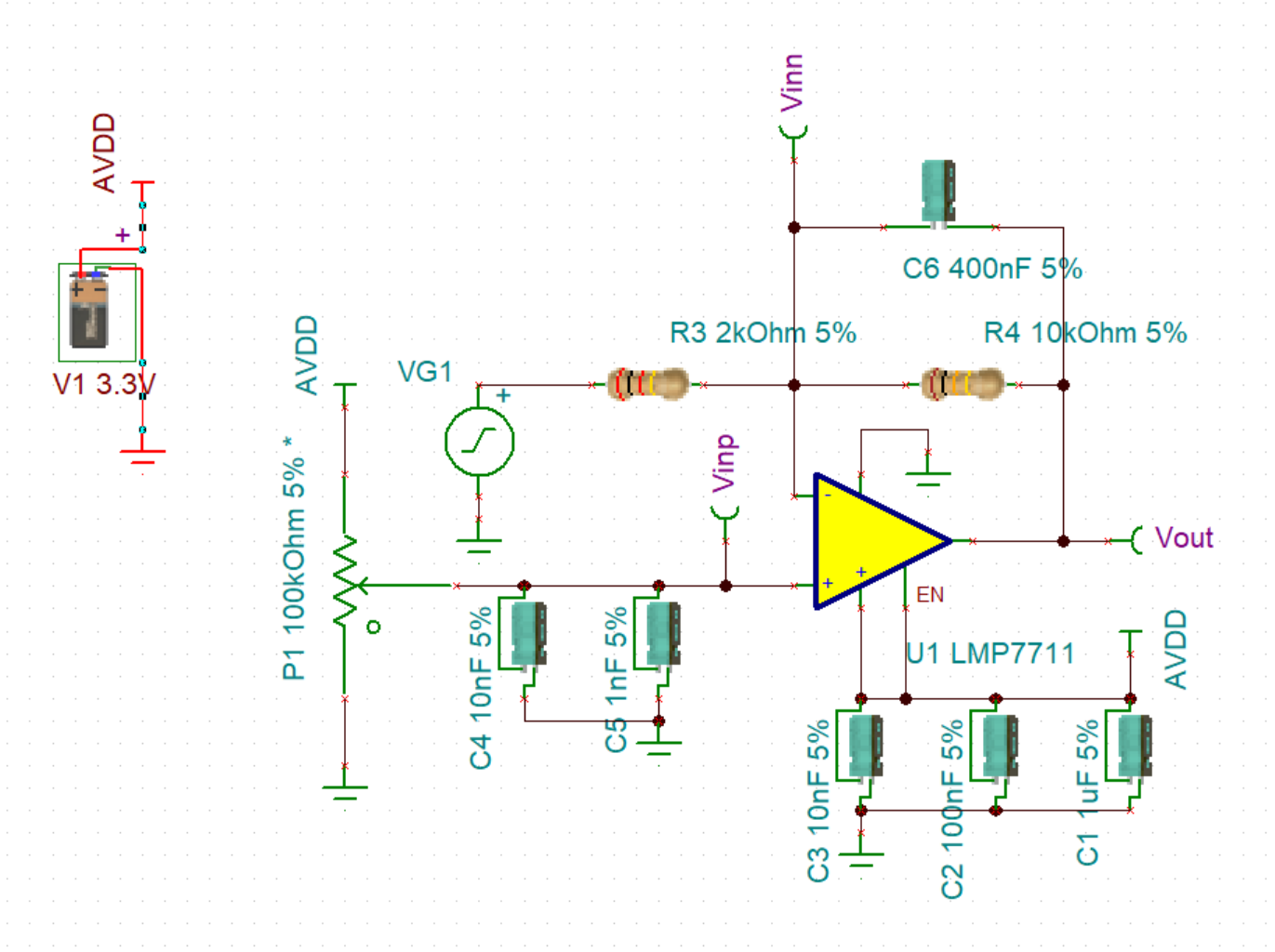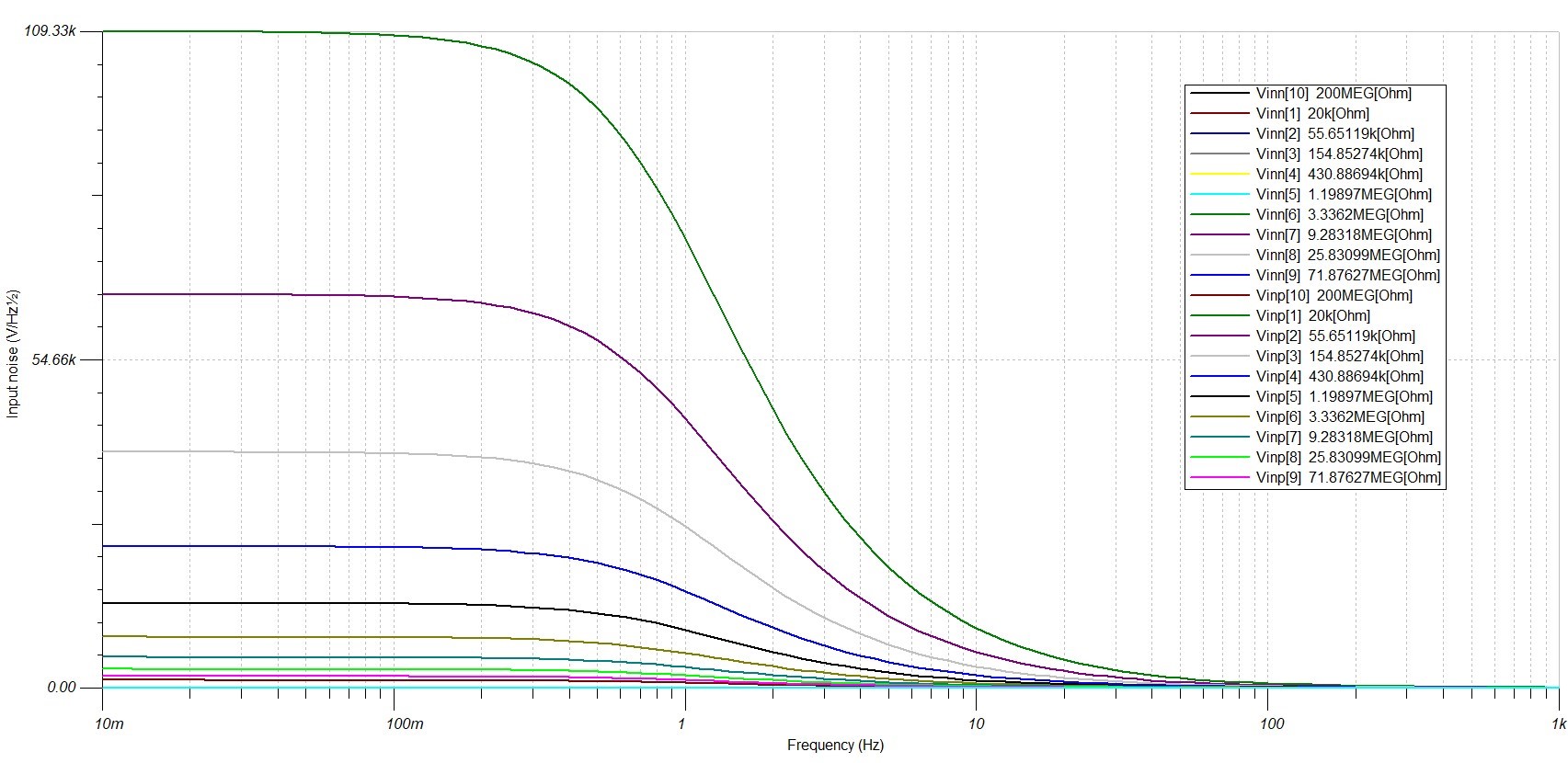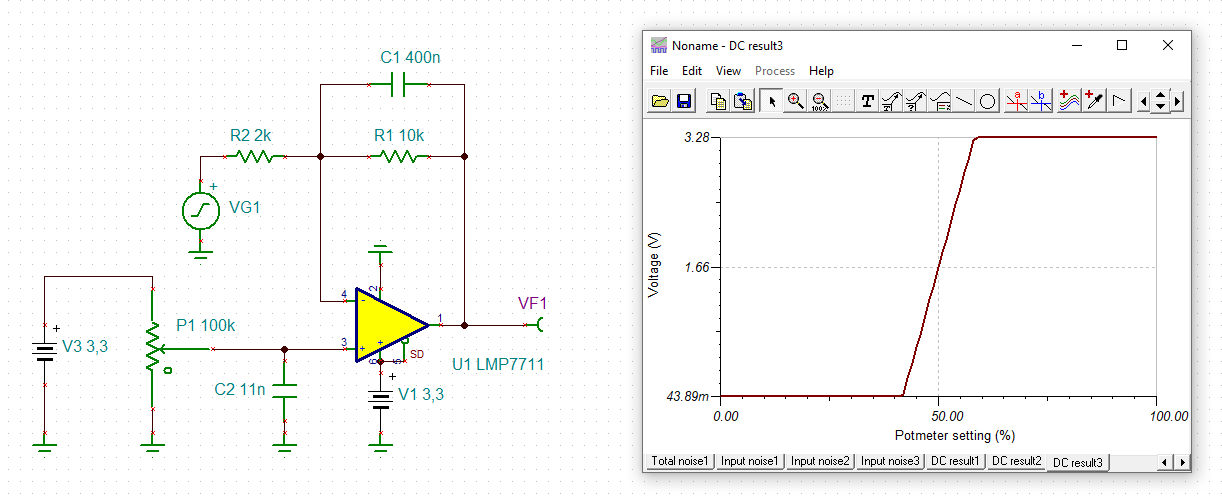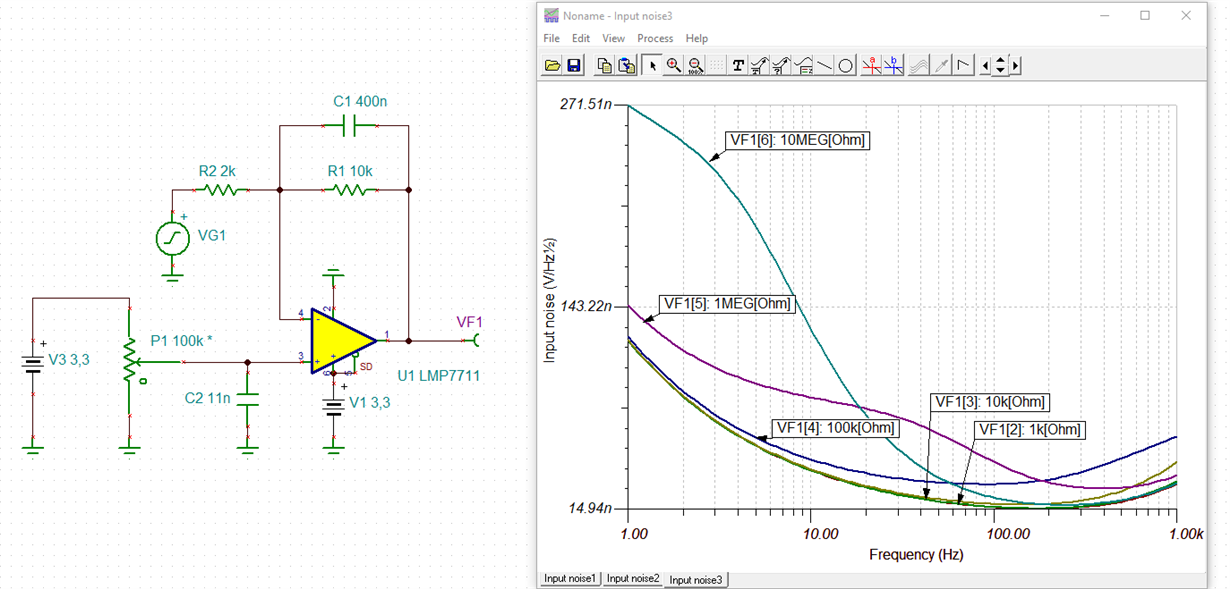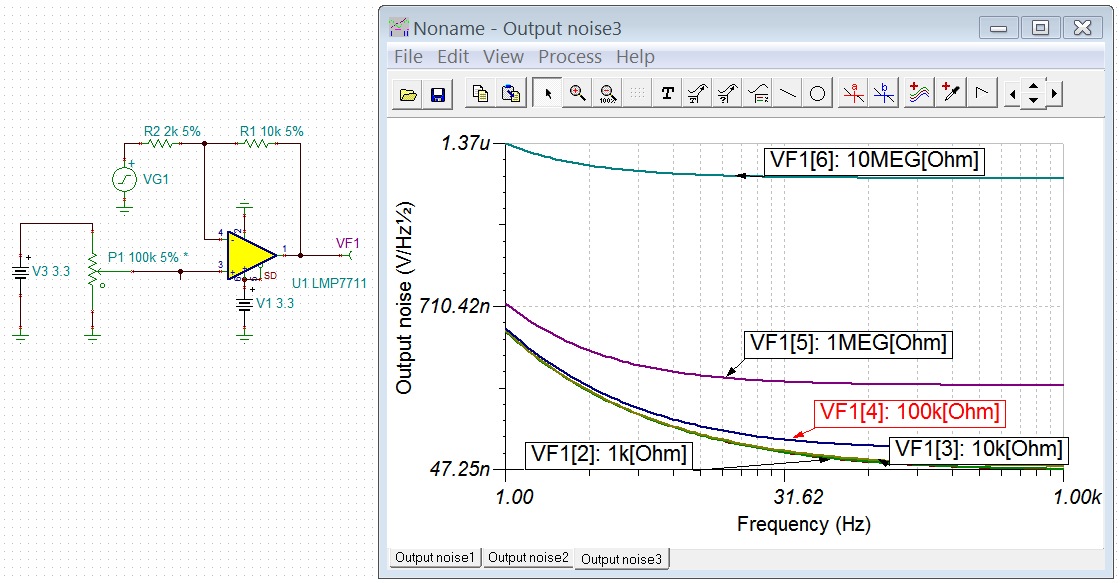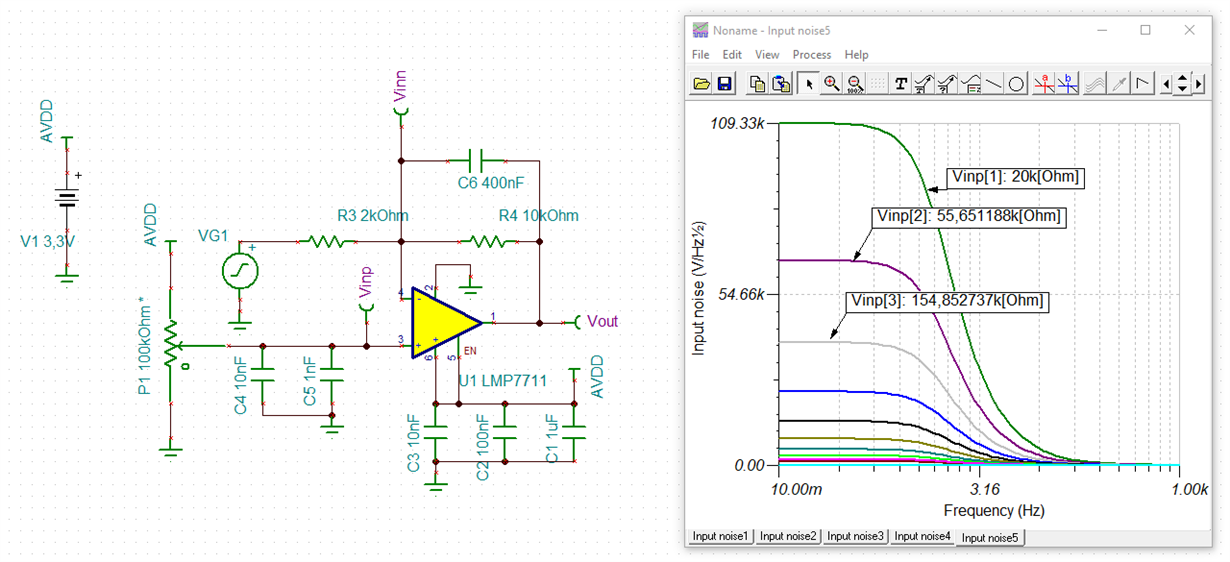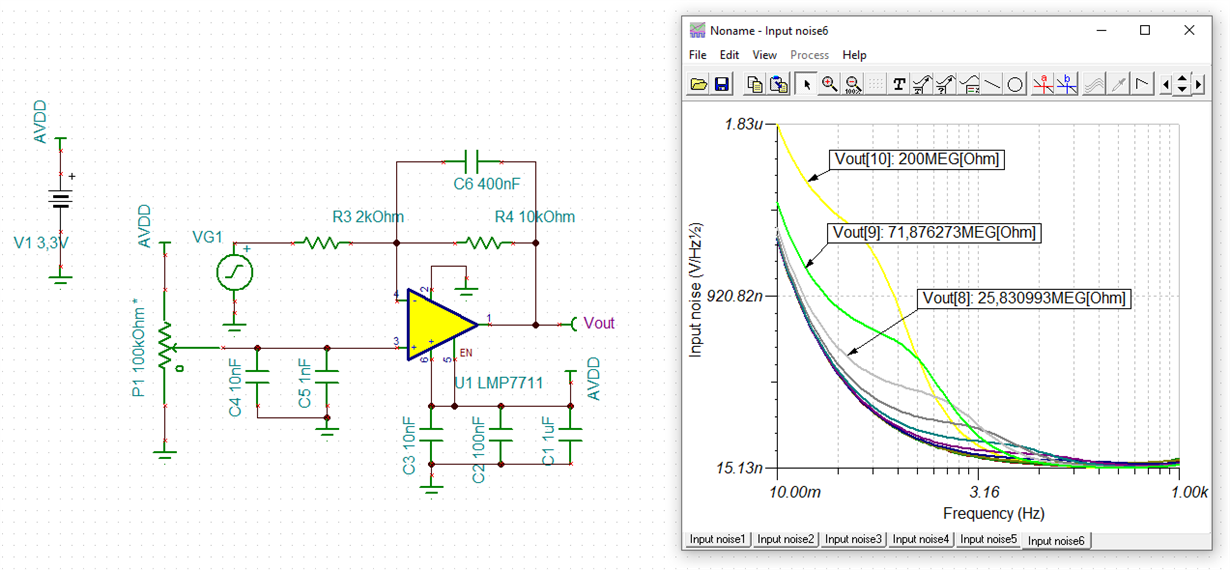Hello there.
I am stuck in a rather bizzare phenomenon while simulating a simple analog circuit in TINA-TI. We all are aware that resistors introduce their own noise into the system, i.e., the higher the resistances the higher the Johnson noise. I am trying to perform a simple simulation by varying the input resistance of a sinple elevel-shifted inverting amplifier and monitoring the input noise in the system. The circuit is as follows.
And, when I try to varry P1, this is what I get:
The input noise should increase as P1 is increased, shouldn't it?
And why is the noise in the range of KV/√Hz?
I definitely must have missed something in the settings!


